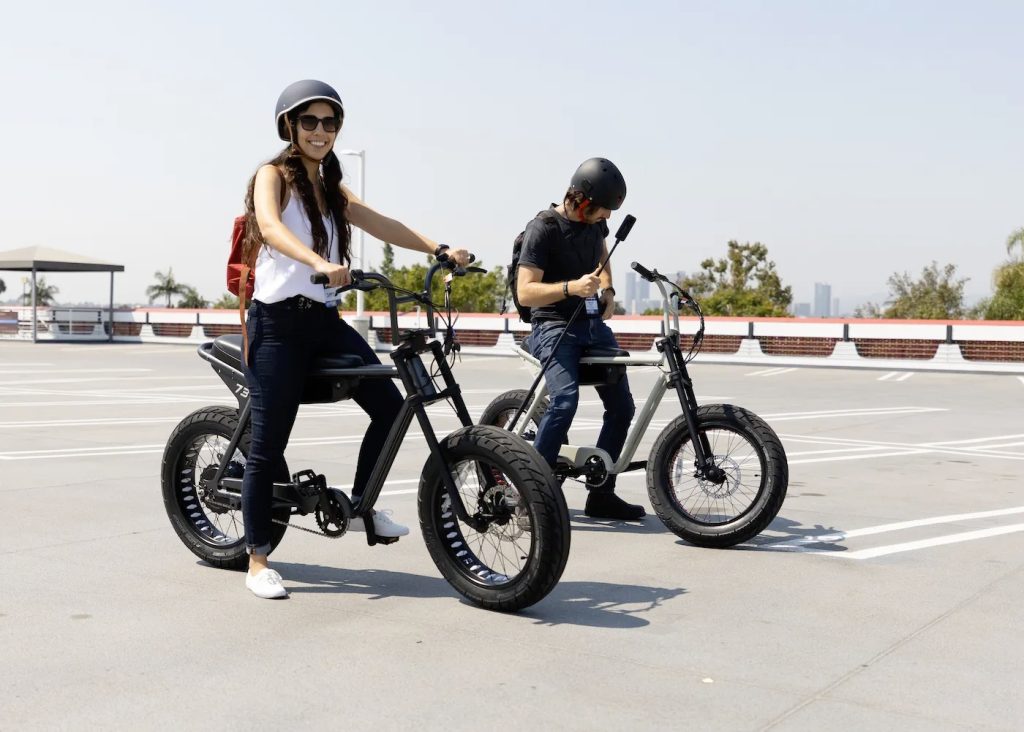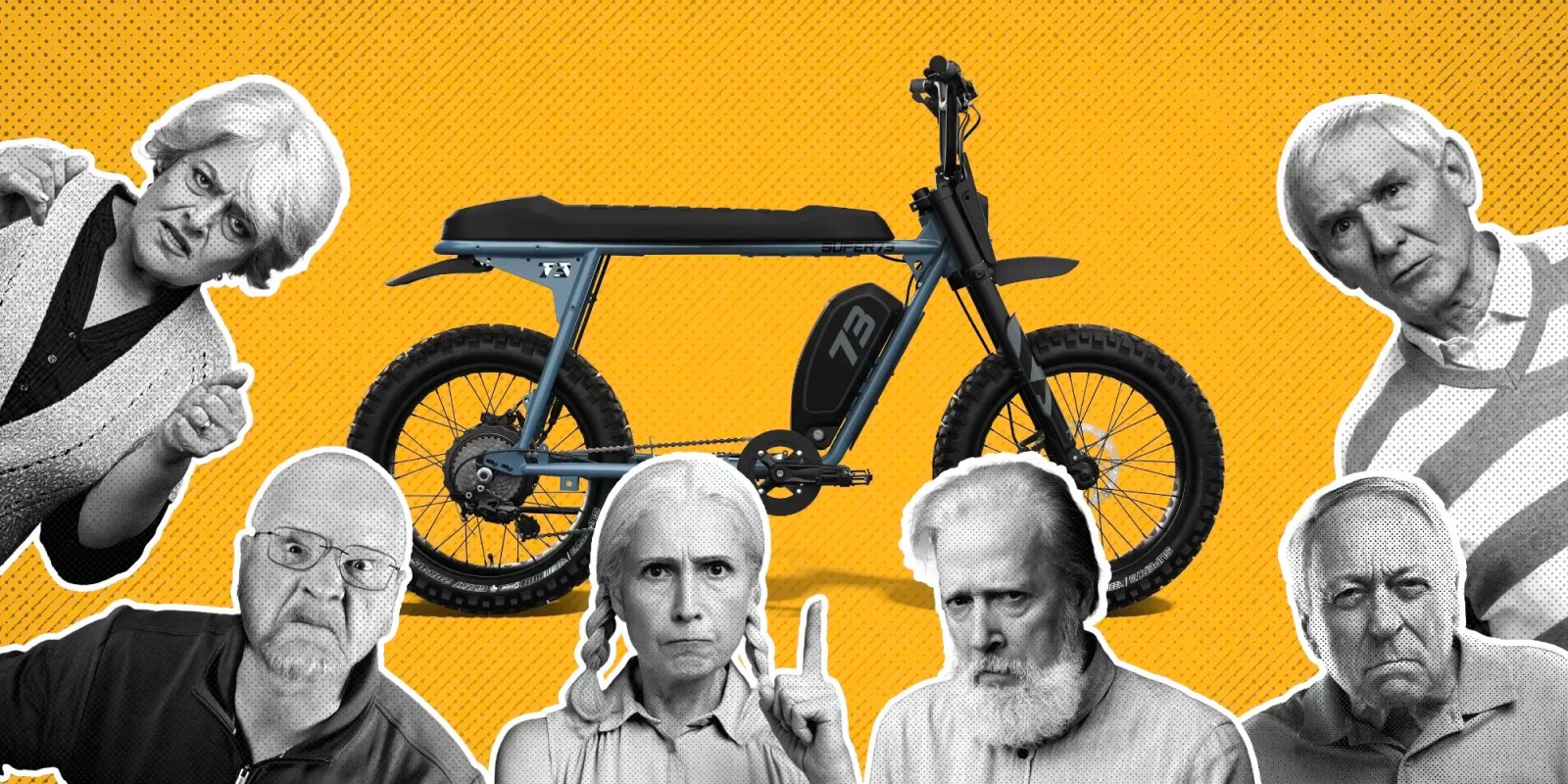
Anyone that’s into e-bikes is almost certainly already aware of Super73. And if you aren’t into e-bikes, then you’ve probably at least seen some Super73s riding around your town. They’re the admittedly motorcycle-looking electric bikes that haven proven extremely popular with young riders in the US. And perhaps that’s the first clue as to why Super73 seems to get more hate than anyone when it comes to criticizing e-bikes.
That always seemed a bit strange to me since I’ve only had positive interactions with the brand. I’ve enjoyed joining on organized Super73 group rides in Los Angeles and even rode a Super73 across Germany with my publisher. So to learn more, I sat down with the company’s CEO LeGrand Crewse to discuss e-bikes, riding culture and why Super73 seems to have such a big target on its back.
Electric bike sales have been booming for years in the US as riders discover the useful and fun alternative to car ownership or public transportation. But with more riders has also come more scrutiny, especially when a subset of those riders flout traffic laws.
If you’ve been following the slew of anti e-bike stories in the New York Times and other publications, you’ll notice a common thread. Super73 is often singled out as some type of key offender. It seems that if you’re at least middle-aged and have a bone to pick with people on e-bikes, then Super73 is the go-to punching bag.
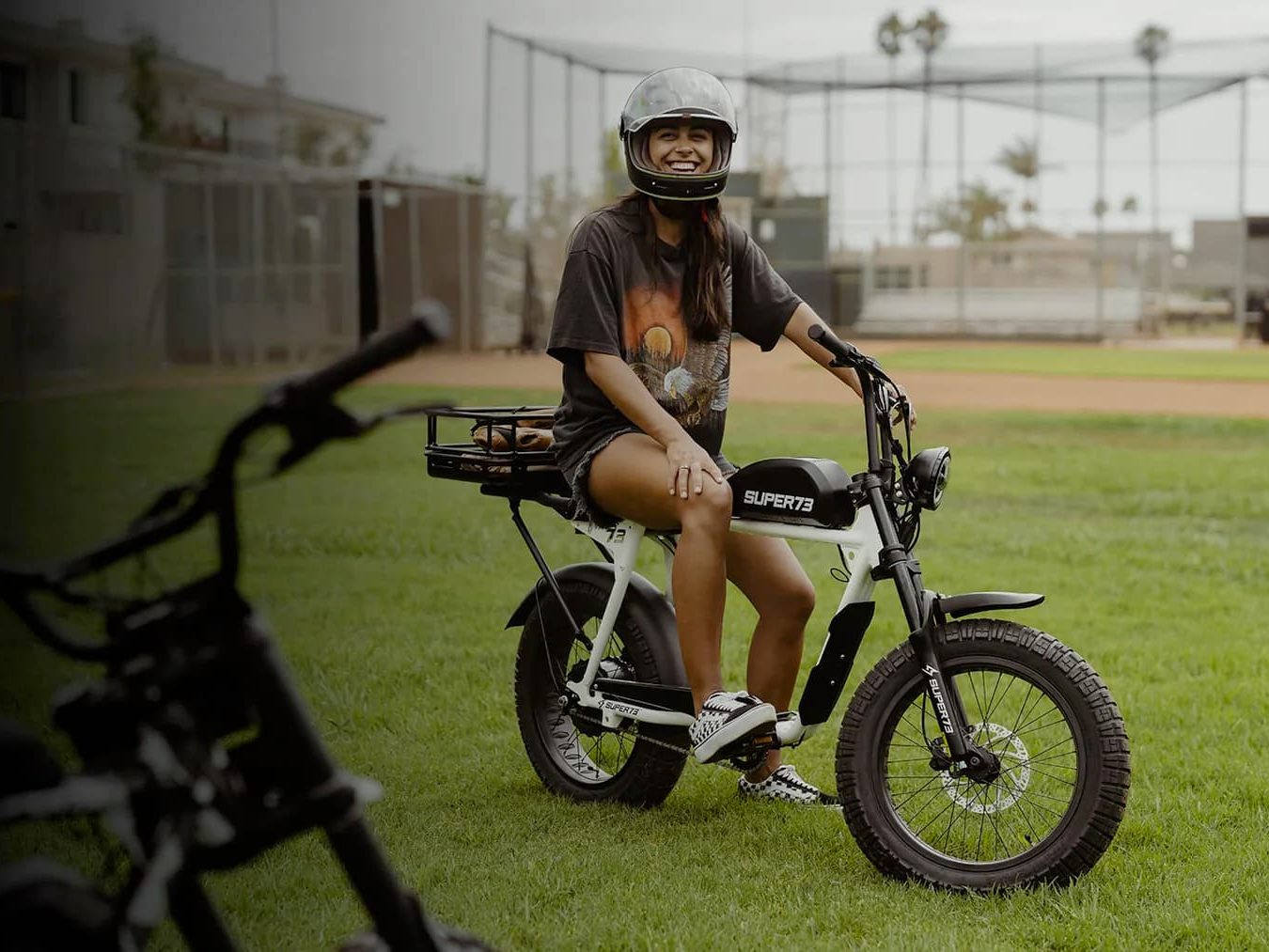
Part of that is likely due to Super73’s appeal with younger riders, which is by design. “We say that we fuse motorcycle heritage with youth culture,” Crewse explained to me.
Based on the company’s data, the average age of a Super73 rider is in their 30s. “Popular opinion might think that it’s 15,” he laughed, “but it’s not.”
Outside of Super73’s K1D balance bike, all of the company’s e-bikes are design for ages 16 and up. Of course that doesn’t mean that younger teenagers won’t find their way onto e-bikes purchased by adults, but that’s not an issue that is entirely unique to Super73.
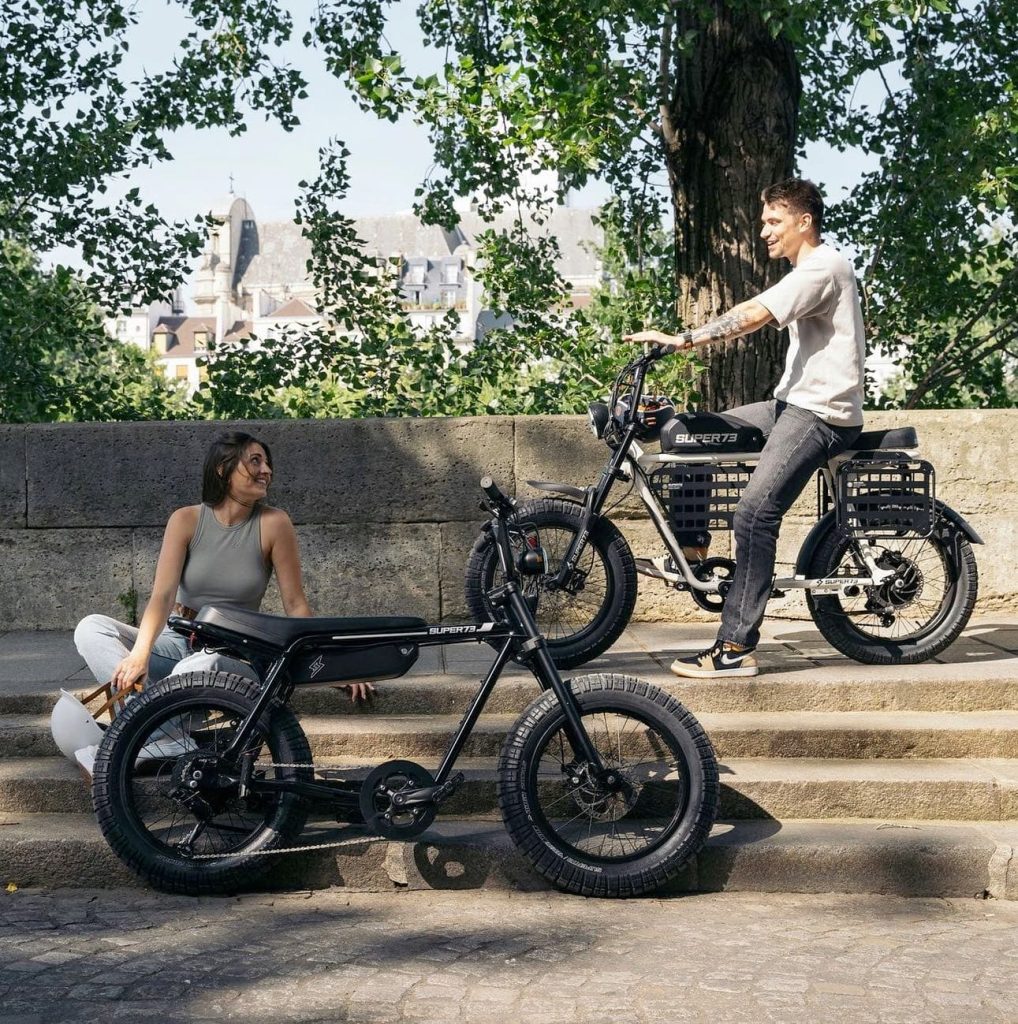
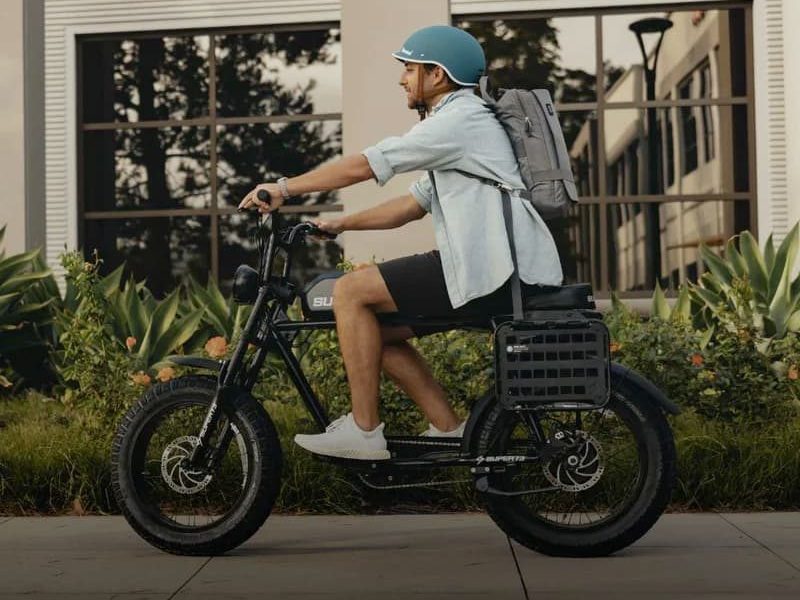
That moto-heritage in the company’s mission statement is quite evident when you look at the customization culture of Super73’s community of riders. “There’s an incredibly strong and storied history of customization in the motorcycle world that’s something that we’ve embraced,” Crewse explained.
And that customization is on full display when you see the diversely decorated and customized e-bikes in action. I’ve personally seen Super73s without a single inch of visible frame left, entirely wrapped in colorful vinyl or otherwise turned into rolling works of art.
Super73 has a decently large accessory catalog, but for serious customizations the free market has stepped forward. Entire companies have sprung up offering aftermarket customization kits that can personalize a Super73 e-bike in seemingly unlimited ways to make each bike one-of-a-kind. Many of those companies were actually started by Super73 riders from the brand’s own riding community, Crewse boasts.
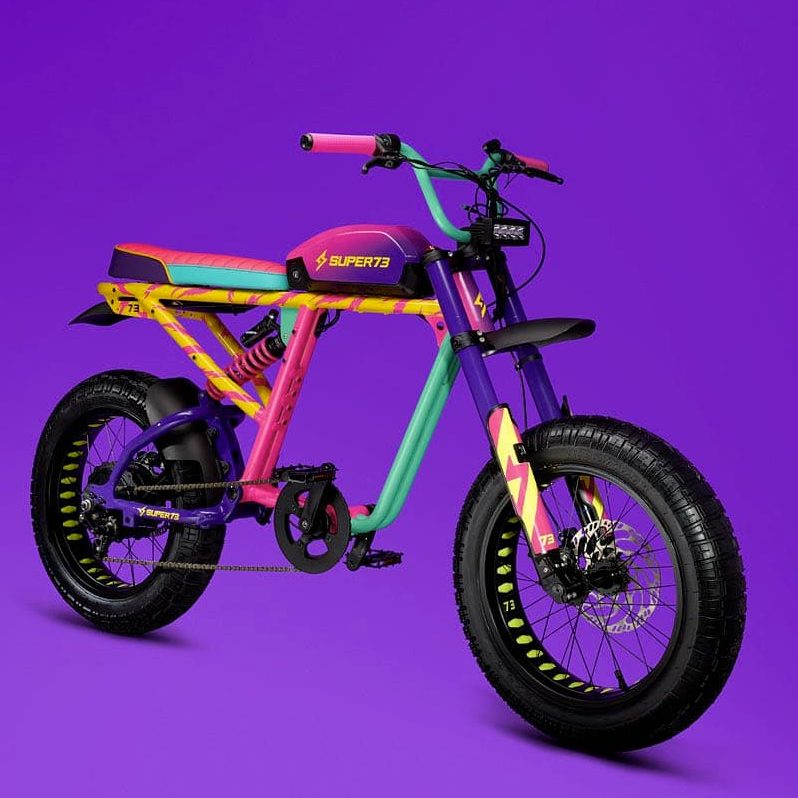
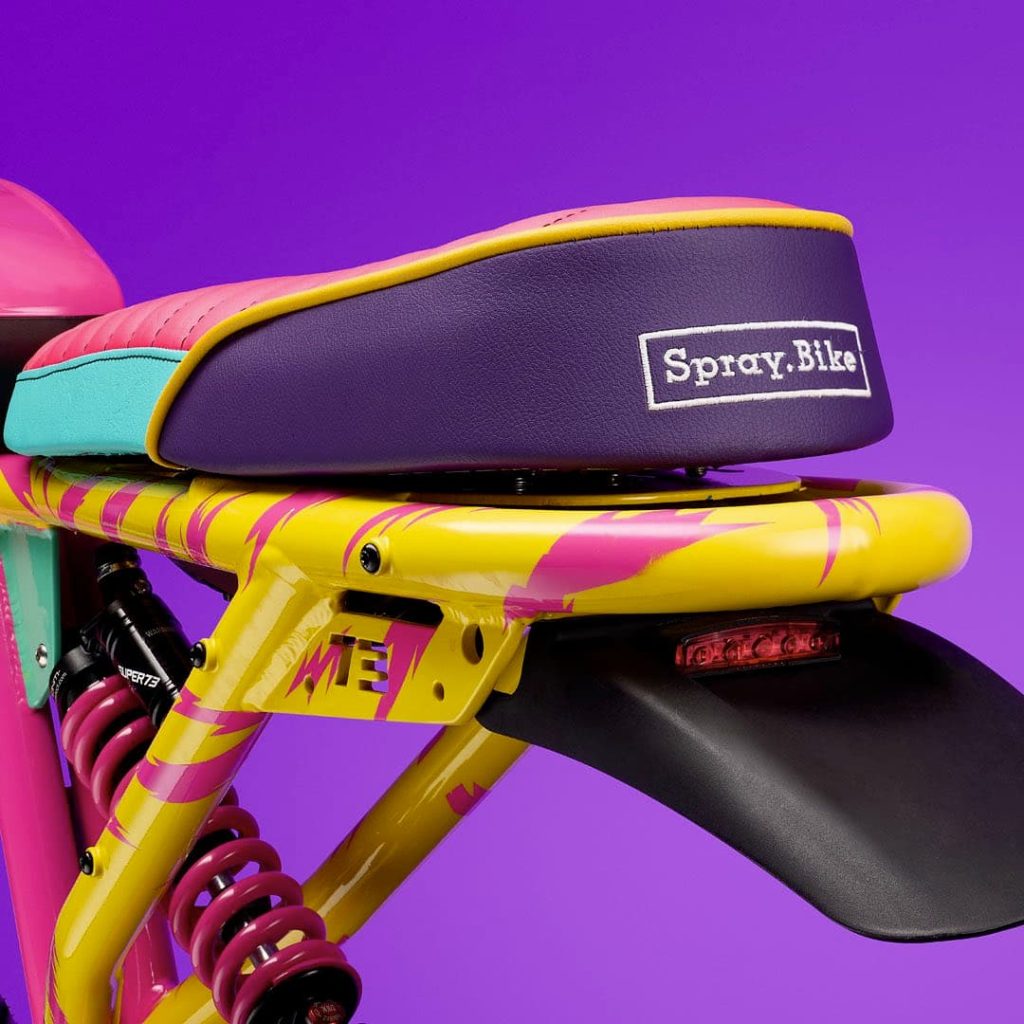
One the reasons that the company is often at the forefront of the debate over e-bikes is likely due to the brand’s recognizability, said Crewse. “We have a very visible brand, our bikes don’t just blend into the background. Most traditional e-bikes are hard to identify from a distance, but that’s not so with a Super73.” Furthermore, since the company landed on the scene in 2016 and popularized moto-styled electric bikes, dozens of brands have sprung up to imitate the Super73 styling, further muddying the waters.
Another facet of Super73’s culture that tends to raise grey eyebrows is the extensive and close knit community built around the brand. I’ve worked in the e-bike industry for nearly 15 years and covered it online, in print and in videos for 10 years. I’ve never seen an e-bike brand with a more loyal or dedicated community than what has sprung up around Super73’s bikes.
This level of community dedication is perhaps most visible in the company’s group rides. Super73 often organizes group rides, which are open to any riders regardless of brand and usually take a path through a mixture of public streets, on-road bike lanes and off-road bike trails – all places where e-bikes are legally allowed to ride. I’ve been on a couple of these rides over the years and seen the effort put into safety, including a rider briefing at the start to cover road rules and route, as well as lead and tail riders from the Super73 team keeping the group together and safe. That doesn’t mean you won’t see riders popping wheelies along the way, but there’s also no law that says both bike tires have to remain on the ground – no matter how much it seems to bother some onlookers.
Any riders who are legitimately reckless or endanger others find themselves less-than-welcome at future rides. This is often done by the community itself, which tends to be fairly self-policing. No one wants to ride around someone who could end up hurting them.
As Crewse explained, many of those types of troublemakers don’t stick with Super73 long anyway, often moving on to other brands that offer higher power and have a looser interpretation of safety regulations (my words, not his).
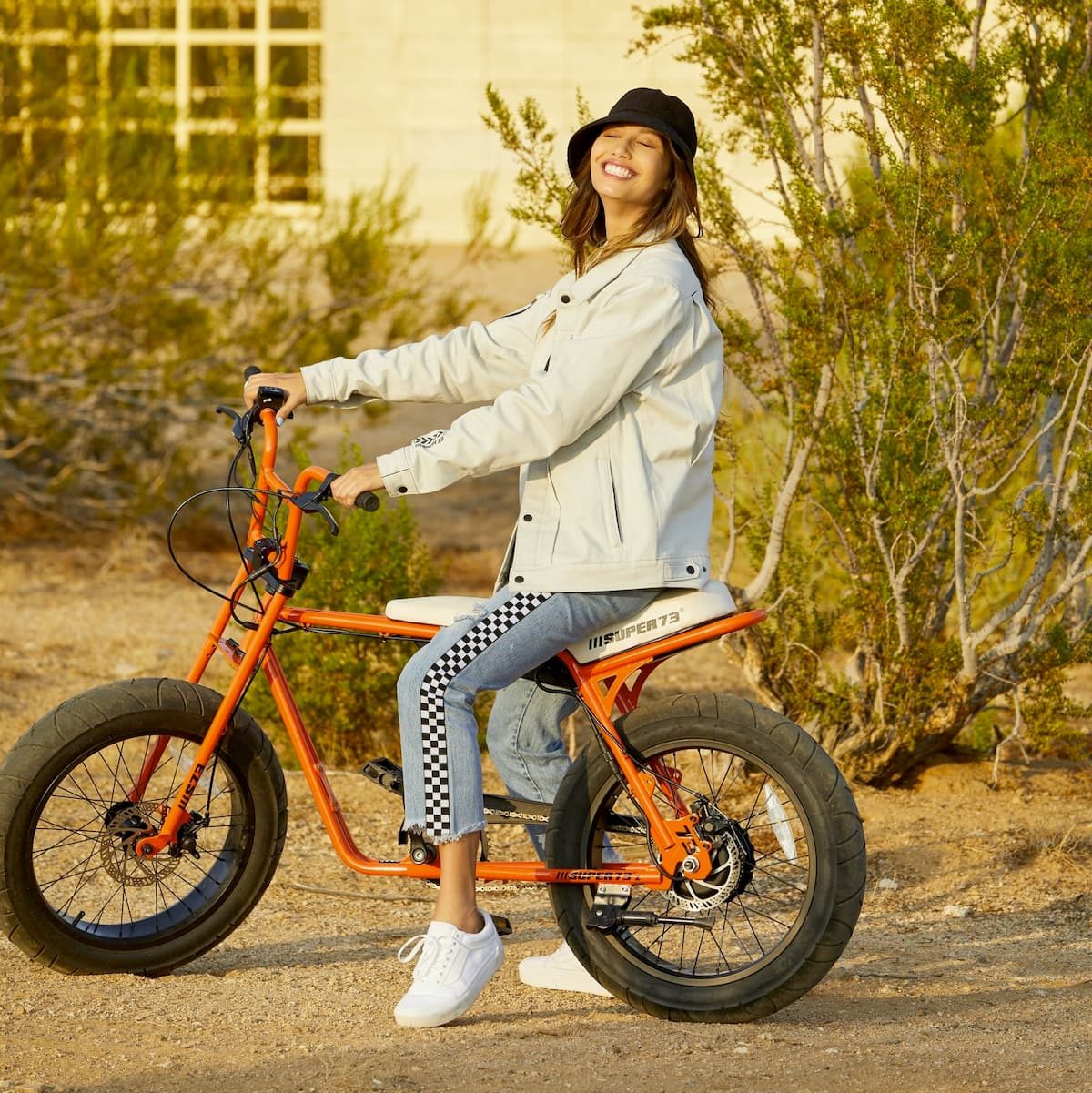
In fact, the blending of motorcycle heritage with youth culture has created another interesting effect in the community: Many riders voluntarily don much more safety gear than most other e-bike riders. While you’ll still see plenty of helmetless riders just like any e-bike brand, there’s a somewhat confounding appreciation for increased safety gear among many riders.
It’s common to see Super73 riders wearing motorcycle helmets, gloves, and other moto-style protective gear. This is despite the bikes traveling at the same speed as nearly all other e-bike brands, and is perhaps merely a reflection of the community’s embrace of several aspects of motorcycle culture.
Riding two-up, another common sight on motorcycles, is also common on Super73s (though many e-bikes now support this). The bikes have longer saddles and have optional rear foot pegs to support a second rider. This isn’t some dangerous modification, but rather a designed-in feature.
I’ve ridden Super73s with my wife on back (and been ridden around on the back of the bike while she drives), and it’s a fun experience to share.

In addition to company-sponsored official group rides, there are also unofficial Super73 group rides put on by bike owners themselves. They can even occur somewhat spontaneously, though these admittedly aren’t likely to carry the same emphasis on safety compared to Super73’s officially staffed group rides.
“Just like any other motorized vehicle, there are people who are going to follow the laws and ride in a conscientious manner. And there are going to be others that will disregard laws and show a lack of respect for others,” Crewse explained. “We always try to highlight and embrace the former, people who follow all the laws and rules.”
The company has made efforts to promote safety in a number of ways, especially among its younger rider base. Much of the work has begun locally with pilot programs that can hopefully be expanded nationally. The company has worked with schools to create safe riding instruction as well as secure bike parking on high school campuses, with one of the stipulations for accessing that secured parking area being the completion of the safety courses.
“I think what is most exciting to me is our work done directly with schools,” Crewse added. Since Super73 e-bikes have proven popular as a way for high schoolers to ride to school, these programs help target those young riders where they are.
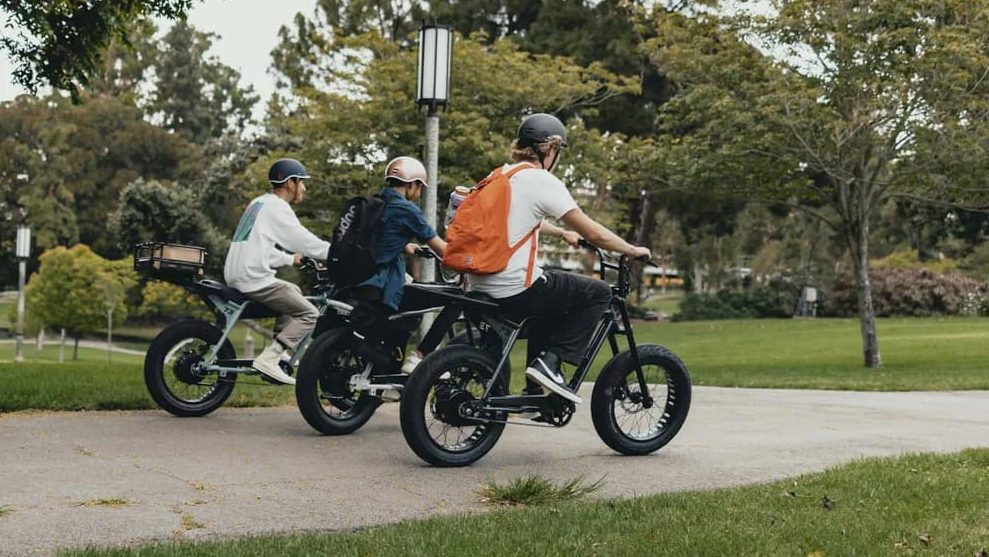
Another issue often attributed to Super73 is e-bike hot-rodding, or modifying electric bikes to reach illegally fast speeds.
In most but not all states in the US, there are three legally defined e-bike classes for use on public roads. Class 1 e-bikes can reach 20 mph (32 km/h) on pedal assist only. Class 2 e-bikes are the same, but can do so with a hand throttle instead of pedal assist. Class 3 e-bikes can reach faster 28 mph (45 km/h) speeds but can’t have a throttle. All three are limited to 750W of power (one horsepower) and must have functional bicycle pedals.
As Crewse explained, Super73 e-bikes ship to customers as Class 2 e-bikes. Riders can use the smartphone app to switch them into Class 3 mode, though only temporarily. When the bike shuts off, it always reverts back to Class 2 limitations.

There’s also an off-road mode that is meant for use on private property, though no one is naive enough to think it isn’t likely still used on the road by many riders. As Crewse explained though, even the off-road mode isn’t all that much faster. “You can’t go insane speeds on a Super73,” he said.
Depending on their weight and the riding terrain, some riders are able to achieve slightly over the 28 mph Class 3 limit when riding in fully unlocked mode, he explained, but added that it’s “well within the +/-10% threshold that is well established in the industry as well as in automotive and other circles.”
As Crewse explained, “the bikes mechanically can’t go much faster than 28 mph.” This is where I get to dust off my engineering degree and confirm that he’s right. Electric motors spin proportionally fast to their supplied voltage. Removing the software speed limiter on a Super73 lets the motor hit its theoretical limit, but that limit is only around 30 mph with a lightweight rider on flat ground. A Super73 e-bike battery simply doesn’t have enough voltage to make it spin any faster.
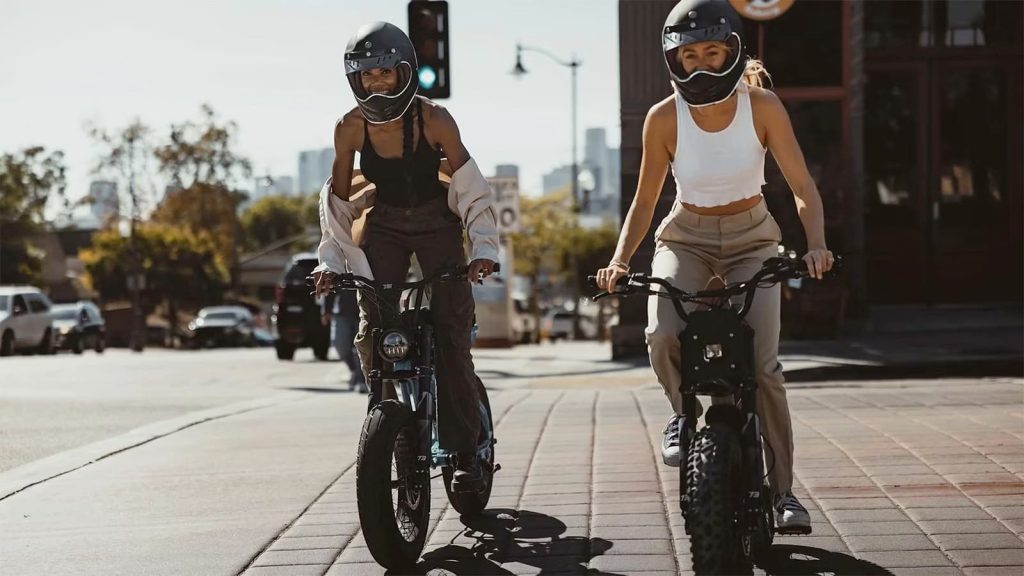
That doesn’t stop many naysayers from claiming they see Super73 bikes zipping around town at motorcycle speeds. Part of that is likely because 28 mph – the legal limit for e-bike speeds in the US – looks quite fast. And it is fast. Closing in on 30 mph is no joke.
But another reason is because there are companies out there that make complete drivetrain swaps for Super73s. The kits enable much higher power and speed levels and make the resulting bike “very illegal,” as Crewse says.
Such kits come with new high voltage batteries as well as replacement motors and speed controllers. Often all that is left of the original bike are the mechanical components – essentially the frame, seat and pedals. The rest is a new high-power electric drive system.
Crewse detailed how the company clearly doesn’t support this. But also, there’s not much they can do. GM can’t stop someone from buying a Chevy Bolt and dropping in a Tesla Plaid powertrain.
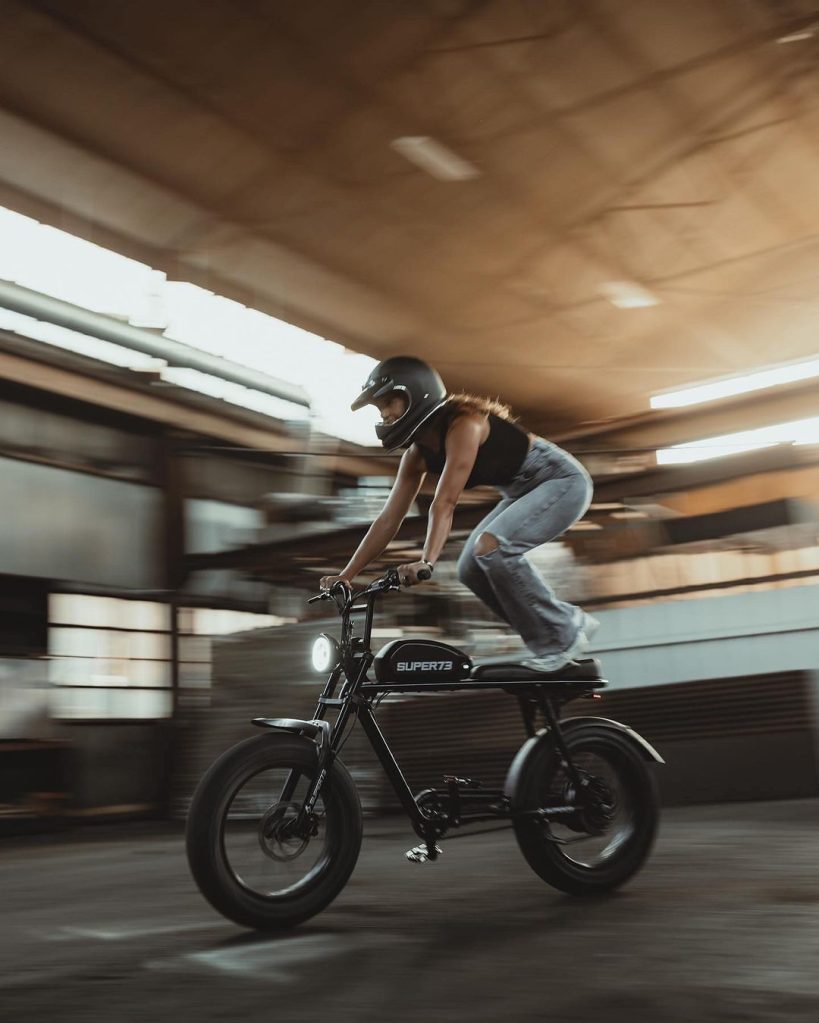
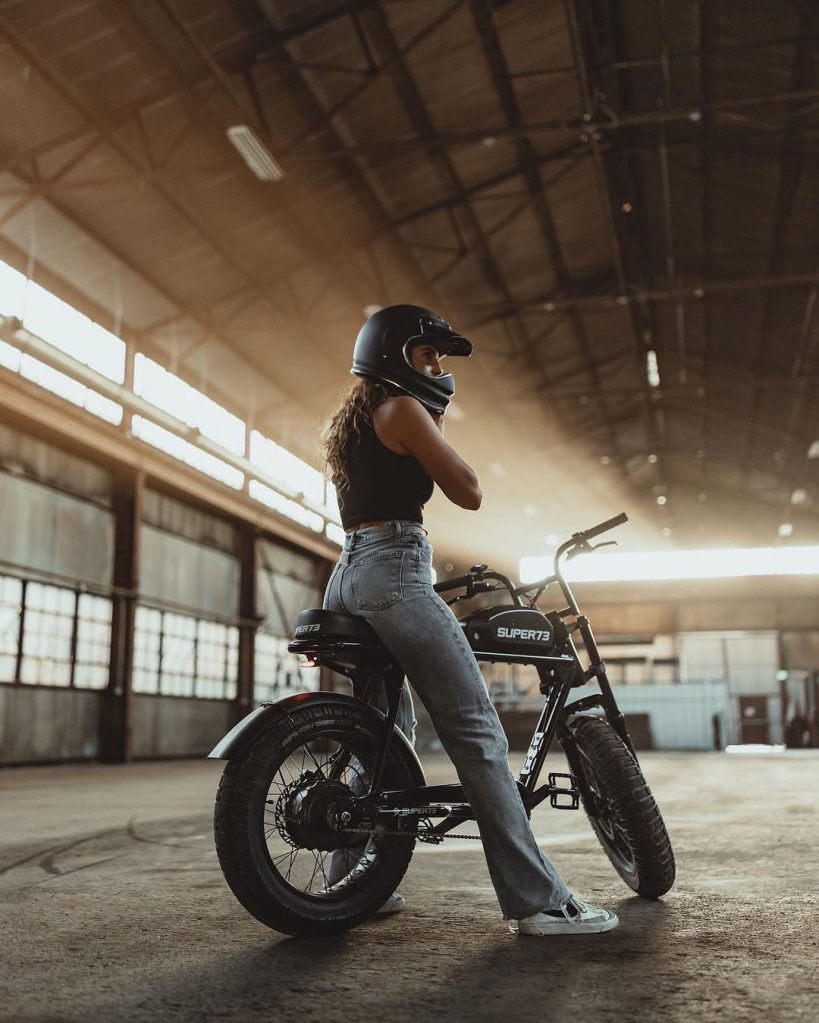
Through the course of an hour talking shop with Crewse, it became clear that the e-bike bogeyman painted by many in the media here simply doesn’t exist. At least not in the way it’s been presented.
Sure, younger riders gravitate towards Super73 because the company gives them a community in which to flourish. The bikes are ripe for personalization and become more than just a means of transportation – they become a source of pride and self expression.
And yes, you’re likely going to see groups of Super73 riders cruising the streets together. But as long as they’re following the law, they have every bit as much right to be there as the 7,000 pound SUVs that also cruise the streets together.
As a company and as a community, Super73 has embraced a focus on rider education and safety while still providing a fun alternative form of transportation.
At the end of the day, it’s just an electric bike. For better or for worse, what really matters is what you do with it.
